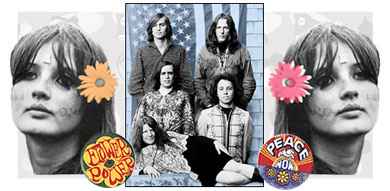Hippies

Fashion Synopsis
“Turn on, Tune in, Drop out.”
Like no other time before, the 60’s exploded into personal freedom and self-expression, seen through bands of teenagers with unique—and remarkably different—styles. There were super stylish mods, rockers, pop-arts, Jackie O’s and more, but perhaps the most memorable subculture of the decade was that of the flower children hippies.
After all the psychedelic flash of the swinging mod scene, a new group spawned from the rainbow bright lands. The hippies rejected convention, had contempt for money and work, and refused to succumb to the mass commercialism prevalent in TV, music and fashion. They turned on to the underground scene, tuned in to themselves, and dropped out of the rat race.
The mods celebrated technology, embraced the clean geometric lines of the space age, and prided themselves on their exclusive, stylistic youth culture. The hippies were different: in the midst of great social and political upheaval—from the Vietnam War to the civil rights movement—the hippies were involved. They spoke out, stood up, and they let their voices be heard. They wore flowers in their hair, painted peace signs on their faces and bellbottoms, and draped themselves in love beads.
The hippies were not one homogenous group at the beginning, but rather two groups that split from the mod scene in two very different directions. One group took to the new psychedelic drug scene that was an extension of the swinging psychedelia of the mods, while the other rejected the plastic society that had defined the mod lifestyle and instead embraced nature.
The psychedelics wore tie-dye, dropped acid and listened to Jefferson Airplane, Jimi Hendrix and Janis Joplin. Their clothes mimicked the stunning colors and patterns of drug-induced visuals, and the music took you on a fantastic voyage of vocals, guitars and sound effects.
The folkies returned to the earth, went barefoot, and listened to Peter, Paul and Mary and Joni Mitchell. They formed communes, embraced their fellowmen and sharing themselves, their beliefs, and their belongings with each other. They revived folk handicrafts, making their own clothes out of old vintage pieces, reworking them with patchwork construction, or handcrafting crochet or macrame clothes.
The two camps evolved on separate lines at first, but a major social revolution occurred in the United States during the summer of 1967, and the world’s youth culture was never the same. America had gone off to war, and the psychedelics and folkies banded together as a collective group to protest the involvement...giving birth to the group we know of as hippies.
The new socially conscious youth culture expressed its distaste for the new society via a homogenous dress ethic of naturalness and freedom. They let go of the style scene, and celebrated equality and brotherhood. Upper class, middle class, lower class… it didn’t matter in the hippie worldview—everyone was equal, and accepted for themselves.
They adopted Eastern and natural spiritualism, and looked to Eastern and Native American spiritual practices for their own inner growth. The embraced ethnic dress, and created a unique look from a melange of different cultures from around the world. They borrowed Victorian gowns from dusty trunks in the attic, paired them with silver and turquoise jewelry from the Native Americans, and wrapped their heads in colorful silk scarves from India.
They grew out their hair, letting it get long and scraggly, and men grew beards. They celebrated nudity, and painted their bodies and bellbottoms with flowers and anti-war, peace-loving slogans. They wore earth shoes, leather sandals, elf boots, or just their bare feet.
Everyone could look like a hippie, since you didn’t need a lot of money. If you couldn’t afford new threads, that was okay—just pick up the thread and needles, and crochet yourself a dress, or patch up some jeans for a new bright pair.
The hippie movement exploded during the ‘summer of love’ of 1967 in San Francisco’s Haight-Ashbury district, and in other urban and suburban cities around the world. Not only was it a personal liberation, but a sexual revolution. Their cry was “make love, not war,” and that’s exactly what they did. These two very different groups came together as vagabond kids, druggies, hippie chicks and as masters of free love. And all they were saying was “give peace a chance.”
